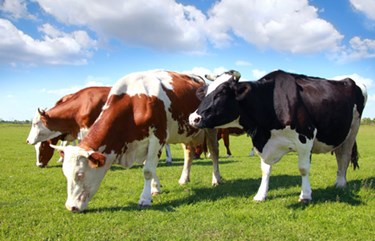AMA Weighs In On Antibiotic Use For Animal Producers
By Laurel Maloy, contributing writer, Food Online

Long argued by consumer and advocacy groups, the American Medical Association (AMA) is now weighing in heavily on the continued use of antibiotics on farms — an industry-accepted practice for increasing profits.
Physicians, and the people they treat, depend greatly upon antibiotics to cure bacterial infections. In recent years, doctors have noticed the effectiveness of many antibiotics has decreased. Once, where a particular antibiotic worked for a majority of the population for a specific illness, doctors are finding decreased responsiveness. They find themselves having to prescribe a different antibiotic, which means a longer course of treatment and patients being sicker for a longer period of time.
This fact also changes the period of time a person is considered contagious. In many cases, a 24-hour course of treatment will render the person contagion-free; unless they don’t respond to the prescribed antibiotic. This sets up a situation where other people are being exposed when the patient was actually thought to be uncontagious. Prolonged or overuse of any antibiotic can cause a person to develop immunity, and in some cases, an allergy, to that prescribed medication.
The added presence of antibiotics in the food on our table is creating a dangerous public health crisis, according to Keep Antibiotics Working. The group has more than 11 million members dedicated to eliminating the inappropriate use of antibiotics in food animals and the subsequent antibiotic resistance. According to Dr. David Wallinga, a physician on the steering committee for this coalition, it is estimated that unnecessary or overuse of antibiotics in agriculture may amount to as much as 70 percent. He furthers his point, saying doctors are “quite freaked out” by the fact the antibiotics they prescribe are not working much of the time.
Earlier this month, during the AMA’s annual meeting, Resolution 513 was adopted. This new, more-stringent policy replaces the previous AMA resolution concerning the use of antimicrobials at non-therapeutic levels in agriculture. The resolution calls for regulatory and legislative measures for antibiotic oversight, as well as an increase in FDA data collection and reporting. At the same time, city and state governments are calling for congress to pass Louise Slaughter’s (D-NY) bill, entitled “Preservation of Antibiotics for Medical Treatment Act” (PAMTA), which was introduced in March 2013. It bans the use of antibiotics for non-therapeutic uses, such as increased weight gain or faster growth. PAMTA is backed by the Union of Concerned Scientists and a whole host of other highly concerned health professionals, scientists, and researchers.
PAMTA calls for re-review by the FDA for previously issued approvals of seven classes of antibiotics critical for human health. If the antibiotics in use are proven to be unsafe or proven to be less effective against diseases, the FDA approvals for farm use would be withdrawn. According to the FDA, about 80 percent of the antibiotics produced in the U.S. are also used in animal agriculture — estimated to be four times the amount of drugs used to treat humans. Confined animal feeding operations (CAFOs) add these antibiotics to feed and water to accelerate growth and to prevent diseases common in the overcrowded conditions the animals are kept in. Antibiotics are much cheaper and easier than upgrading animal housing and sanitation or treating sick animals after the fact.
One example of antibiotic resistance linked to CAFOs is Methicillin-resistant Staphylococcus aureus (MRSA). A recent study suggests that hog farms are the source of ST398, a new strain of MRSA responsible for more deaths each year than AIDS. Salmonella Heidelberg is another drug-resistant bacterium, the one seen in the case of Foster Farms’ chicken. This antibiotic-resistant strain of Salmonella has infected more than 574 people in 27 states, with 37 percent of those people having to be hospitalized. As always, the ones most at risk are the elderly, the very young, or those with already compromised immune systems. However, unchecked antibiotic use by CAFOs will result in more and more antibiotic-resistant illnesses and will continue to increasingly threaten the public’s health.
The writing is on the wall, so to speak. As a CAFO or other farm animal producer, now may be the ideal time to start reducing the use of antibiotics as a matter of procedure. This issue will not go away and is quickly gaining momentum. Those in the forefront of new and innovative means by which to improve production, while improving the human condition, will be that much ahead of the game when the axe falls.
